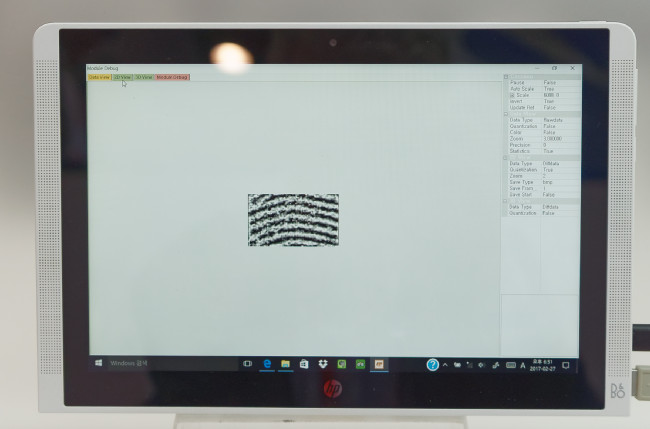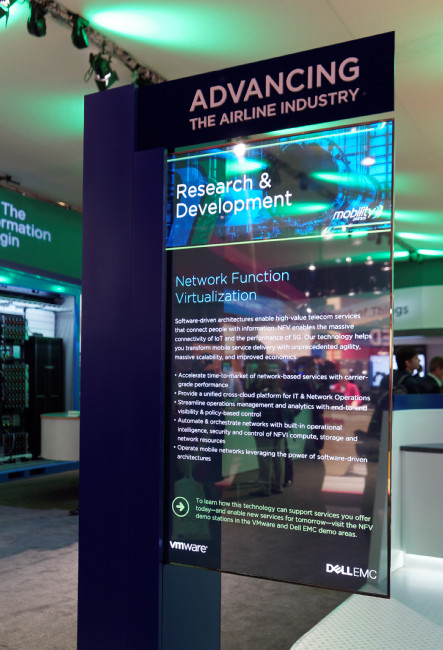CrucialTec of Korea is a developer of fingerprint and specialised sensing and was showing how its technology could be used for bezel-less displays. The company can detect and identify fingerprints through glass and also has features to allow ‘anti-spoofing’. The company can also measure heartrate using a touch sensor that can also act as a proximity detector. CrucialTec also claims to have a single layer touch solution that can be used with glass of under 0.5mm and can be created with a single mask ITO process and with its own controller that can be used even where electrodes have relatively high resistance.
 CrucialTec’s fingerprint sensor can operate through glass. Image:Meko
CrucialTec’s fingerprint sensor can operate through glass. Image:Meko
Dell had a very big presence at the show, but as a software and services company as Dell EMC and that includes VMWare, which was part of EMC. We couldn’t find anybody that wanted to talk about client devices or displays.
 Dell used a Transparent Display on its booth and plenty of visitors were looking at them with curiosity. It’s a shame they are not available any more! Image:Meko
Dell used a Transparent Display on its booth and plenty of visitors were looking at them with curiosity. It’s a shame they are not available any more! Image:Meko
EGIS Technology, was one of the several companies showing fingerprint technology that works through glass, in this case with glass up to 1 mm thick. Other under glass solutions often need part of the cover glass to be thinned by etching, but Egis is confident that this is not needed for its technology. It also has a technology that can allow the power button to be used for fingerprint recognition.
 Dirac has impressive audio technology to maintain audio while moving your head. Image:Dirac
Dirac has impressive audio technology to maintain audio while moving your head. Image:Dirac
Dirac Research is an audio company from Uppsala, Sweden, although it also has facilities in China, Japan, Korea, the US and Germany. It specialises in tuning high end audio and includes brands such as Bentley, Rolls Royce, BMW and Volvo as well as Hardman, but it has a recognised consumer brand in China. It has developed very good audio for VR that can maintain the position of audio objects even as the user’s head rotates. I listened to a range of audio and was very impressed – it really gave a good sound field. The company also has very good technology for expanding the sound field from small and single speaker systems that, again, was very impressive. All of the Dirac processing is done in the digital domain, before the signal goes through the D/A converter.

